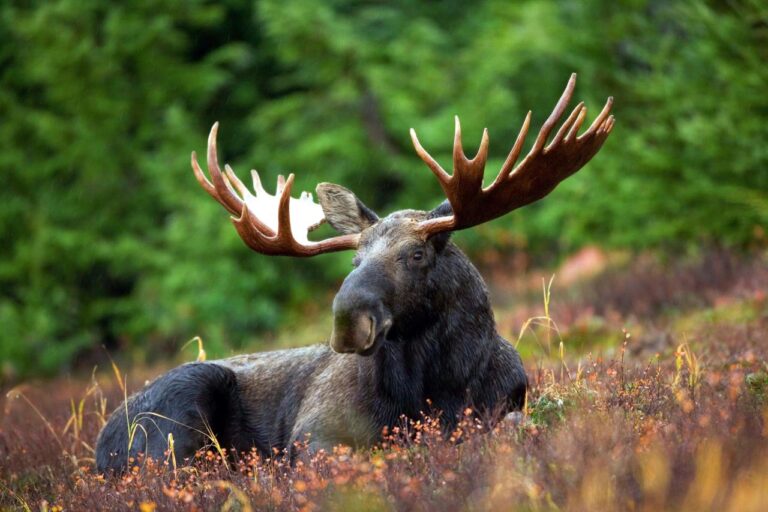If you’re driving through the Great White North this winter, you might want to keep an eye out for a moose trying to lick your car.
Jasper National Park has warned drivers that moose may wander onto highways to lick salt off the asphalt, and have urged motorists against stopping to allow the huge mammals to also lick their vehicles.
Moose are found in large numbers across the U.S. and Canada, with Canada alone being home to an estimated 830,000 of the huge mammals. They are the largest species of deer, standing up to 7 feet tall at the shoulder, and over 10 feet tall at head height.
Parks Canada began to warn motorists of this bizarre behavior after they received reports from drivers passing through Jasper National Park that moose were licking their cars.
It turns out that the moose venture to the roads to lick the gritting salt from the highway, as their huge size requires a large amount of sodium.
“During the winter months, moose don’t have access to vegetation with sufficient levels of sodium, so they develop a craving for salt,” Rob Rempel, an environmental consultant and moose expert, told Newsweek.
“Under natural conditions, they feed heavily on aquatic vegetation in the spring time to meet this requirement (e.g., lily pads). However, sodium is available to them in winter months in northern locations where salt is used to de-ice roads. This is why you often see moose on the sides of more remote roads if salt has been used. Of course salt gets onto the sides of cars, and if vehicles are stopped, say people stopping to view moose in a national park, then moose may be inclined to lick the side of the car, as well. This presents a danger to moose and people.”
However, this can cause the moose population to spend more time around the roads, putting them in danger of being hit.
“In addition to the salt, there could be other toxins associated with the salt on the side of the car. Because the craving for salt could be quite high, if moose begin to associate salt with vehicles, then on occasion they may approach a moving vehicle to get salt. An accident with a moose can be, and often is, very deadly, and many hundreds of accidents occur annually,” Rempel said. “The vehicle clips the legs of the very tall moose, and because the moose is heavy (a large moose can weigh between 1,000 and 1,400 pounds…), the animal crushes the front of car. This could result in a deadly accident.”
Drivers are urged to slowly drive around the moose instead, and to keep an eye out for moose in the road during the darker hours of the day. Around four moose are killed every year after being hit by cars in the Jasper National Park area. Collisions with moose can be catastrophic to the car and passengers due to the mammal’s immense size: between 2000 and 2014, 236 people died in moose-vehicle collisions across Canada.
Parks Canada has considered swapping out their road salt for sand instead, but the moose still gather to lick it, as the sand also contains small amounts of salt.
“There’s been a few projects in various places that have tried salt alternatives, but they tend to be more expensive or they don’t work as well or both,” Tracy McKay of Parks Canada told Canadian news outlet CBC. “If it’s safe to keep going without running into the moose, then we would recommend people just try to slowly, carefully drive away.”
Source: newsweek
